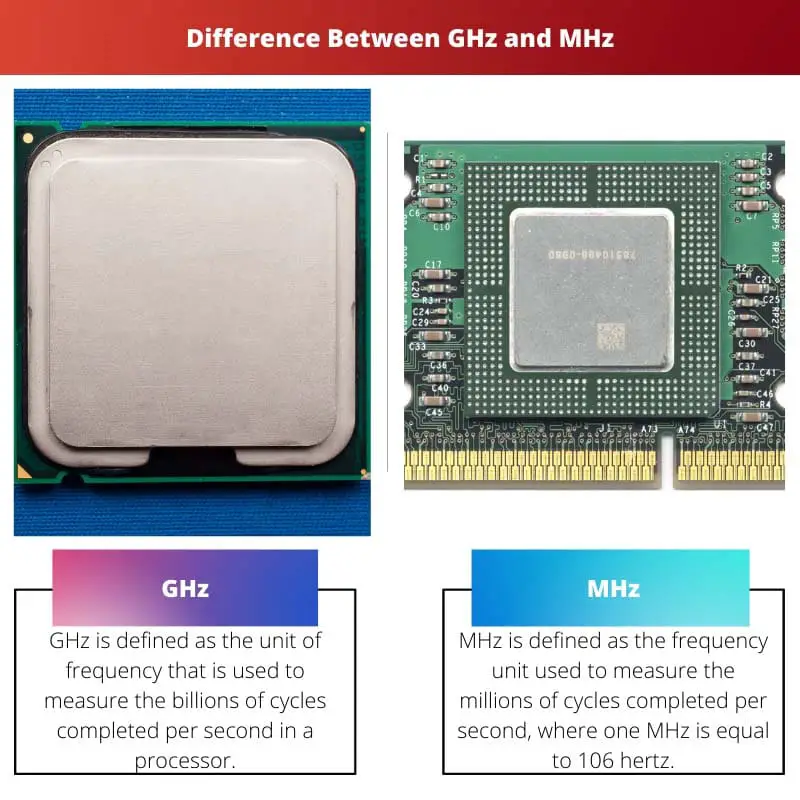Both of these units are used to measure the clock frequency, or the speed at which a processor can complete a single cycle.
How many times is MHz different from MHz? Unforgivable Errors
Sometimes it just pisses me off when I see how illiterate people are! Although they somehow manage to create electronics and technical articles. True, then the satellites go down.
One of my hobby… hobby… hobbies is to look for errors. Both in diagrams and texts. But it's one thing to indulge in this pastime by reading ads on the bus. And the other is to raise your self-esteem at the expense of reputable companies, cool designers and developers.
Are there similarly enthusiastic text perfectionists among my readers? About the mistakes – curiosities and not so curiosities – that I've encountered in my life will be this article.
Units of Measure
Well, how to explain to people that the carrier frequency of a cellular communication cannot be 1800 milliehertz (mHz)! That would be what period of oscillation would that be? And I've seen this in an article on the principles of communication! For those who don't get it:
And how proudly Internet sales managers shout about the speed of 100 mB/sec! Do they know that at this speed this article will be open for several years!
Or another example. Some do not know that the unit of measurement "msec" does not exist! Nevertheless, on many websites and even in the instructions it is the order of the day 😥
The "delta" relay is also turned on "a little bit" for the pause time, and the pause itself is marked with the unknown unit "msek". Photo from the same article:
I wonder at what universities did the designer who wrote this study? I consider it unprofessionalism. By the way, the relay works after installation for more than 5 years, with no problems. It is just that often designers and circuit designers are completely different people, often not knowing each other.
It is immediately obvious that in the course "Electroradio Measurement" such specialists had "fail".
Another example – a screenshot from the website of "professionals" who deal with measurements and energy audits:
What are they going to measure with at 50 μsec? As a specialist who has used a voltage quality analyzer more than once, I understand what we are talking about. But what is my immediate opinion of this company?
Why do we really need 5G?
Even someone who only hears about 5G from the corner of his ear knows that we are talking about higher data transfer speeds. But is that the main purpose of next-generation networks? Will operators around the world spend over a trillion dollars just to have a full-length movie downloaded in 10 seconds instead of 10 minutes?
Many people ask questions like this and conclude that "something is not right" here. Apparently, 5G has another purpose! And for the naive people came up with a convenient excuse. And indeed, high speed (theoretically up to 20 Gbps) is not the main task of 5G networks.
5G provides higher network capacity
Have you ever wondered how many devices are connected to the Internet today? There are billions of them, and that number is growing quite fast. Ten years ago, when 4G was first introduced, the world was a very different place. Today everyone, from young children to the elderly, uses mobile Internet phones. Modern 4G networks literally cannot cope with such a load. At concerts, sporting events and other mass events the quality of connection drops noticeably, and the Internet disappears altogether.
At the same time, more and more new devices, from refrigerators and coffee machines to cars and various portable gadgets, are connected to the network. There is no need to even talk about the critical importance of mobile Internet in industry and business.
The 5th generation networks solve this problem by providing more than 100 times the network capacity. We'll talk about why this happens later.
5G technology reduces latency to 1ms
Gamers are well aware of the concept of network latencylatency), when the image displayed on the screen of a smartphone/computer in reality is already "outdated" by 30-50 milliseconds (or more) and accurately made shot does not hit the target. After all, what happens on the server is not displayed on the screen of the device instantly. Accordingly, the player's reaction is at least "slowed down" by the network response speed.
Instead of a conclusion
The purpose of this article has been to explain why a 5G network is needed and how exactly we have achieved increased speed and reduced latency.
We have also seen that a 5G network will not provide maximum speed and minimum latency for all users. Only millimeter waves can fully unlock the next generation of mobile networks, but due to the high cost of deploying such networks, they will not be available to everyone and not immediately.
In addition to speed and latency, 5G networks contain many other interesting features, which we will touch on only in passing, so as not to overload the material.
It is known that the size of the antenna depends on the wavelength. It turns out that to work with millimeter waves you need very small antennas. Accordingly, one 5G base station can accommodate hundreds of antennas without increasing the size of the cell itself. This technology is called Massive MIMO..
With Massive MIMO, a single base station can serve a much larger number of simultaneously connected devices.
In addition, with Massive MIMO, a high-frequency 5G signal can be made narrowband. Imagine that an antenna does not emit electromagnetic waves in all directions, as, say, a candle emits light, but does so like a flashlight, directing the waves toward a particular device.
Of course, this analogy is primitive and the waves are not directed at the device like a laser pointer. But by emitting a signal simultaneously with multiple antennas, there will be places where the waves will overlap, amplifying the signal in a particular direction. This focusing of energy increases the bandwidth and efficiency of the network by reducing interference (interference) between beams pointing in different directions.
As you can see, there is nothing mysterious or scary about 5G networks. This is not the technology of the Antichrist or a weapon of mass destruction. Fifth generation networks are the next round of technology development, understood enough for anyone who wants to understand the issue instead of supporting ridiculous conspiracy theories.
What is MHz?
Hertz is the unit used to measure the number of cycles of an oscillating body. The abbreviation MHz stands for Megahertz.
MHz is the unit used to calculate the frequency of millions of clock cycles per unit time.
It is a common Hertz multiplier used to calculate the periodic cycles of a microprocessor. One MHz is mathematically equivalent to 1,000,000 1 10 Hertz. XNUMX MHz can also be represented as XNUMX 6 Hertz. `
The value in MHz can also be converted to GHz. Remember, however, that megahertz is a smaller unit of measurement than gigahertz. Consequently, megahertz is related to gigahertz as follows:
MHz is commonly used to measure the frequency of microprocessors. It is also rarely used to measure radio waves, television broadcasting, high-speed digital data transmission bandwidth, etc.
MHz is often used to measure extended spectrum signals.

The main differences between GHz and MHz

- The main difference between GHz and MHz is that while both measure the number of cycles per second in a processor, one GHz is equivalent to 10 9 hertz and one MHz is 10 6 hertz. Hence, GHz measures billions of cycles performed per second, and MHz measures millions of cycles performed per second.
- The full form of each abbreviation is also different. The abbreviation MHz stands for megahertz and GHz stands for gigahertz.
- Both of these units are used to measure the computing power of computers. While GHz is used to measure the processing power of office and home computers, MHz is used to measure the processing power of much smaller microprocessors.
- Wireless phones, radio waves, and television broadcasting operate in the MHz range, while Bluetooth and Wi-Fi networks operate in the GHz range.
- One MHz equals one million cycles performed per second, and one GHz means billions of cycles performed per second.
- The relationship between the two concepts can also be seen as a point of difference in the analysis on either side. As a larger unit of measurement, GHz is 1,000 times larger than MHz. Conversely, 1 MHz is 1,000 times smaller than 1 unit of GHz.
I have put so much effort into writing this blog post to provide you with value. It will be very helpful to me if you consider sharing it on social media or with your friends/family. SHARE ♥️
Read More:




